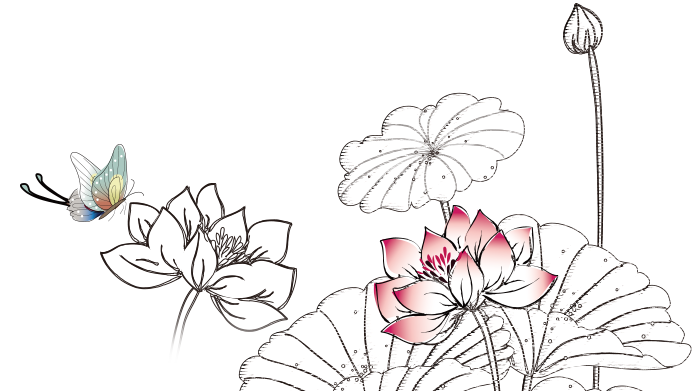August 5, 2018, Living Buddha Lian-sheng on Capacities of Practitioners
Living Buddha Lian-sheng on capacities of practitioners
Eminent practitioners transform directly into buddhas or bodhisattvas
Middle-level practitioners cultivate inner practices
Ordinary practitioners cultivate spiritual union with principal deities
【TBS Seattle News】
Rainbow Temple in Seattle, USA, with the support of the fourfold disciples, reverently invited contemporary Dharma King Root Lineage Guru Living Buddha Lian-sheng to preside over a Mahabala Homa Ceremony on the afternoon of August 5, 2018.
Mahabala is the precept protector of TBS. He is also a dharma protector who, along with Marici, has vowed to protect TBS. Mahabala, a Heruka who is the integration of many deities, has Amitabha atop his crown. He is therefore an emanation of Amitabha. The celestial whisk he carries in his hand signifies that he is an emanation of Jade Pond Golden Mother. Mahabala himself is the Mighty Envoy of Ksitigarbha and therefore an emanation of Ksitigarbha. Mahabala appears as a thumbprint on Living Buddha Lian-sheng's right thumb and is the dharma protector of Living Buddha Lian-sheng. Hence, Mahabala is an also emanation of Padmakumara. Mahabala is therefore an imposing and powerful Heruka who is the integration of Amitabha, Jade Pond Golden Mother, Ksitigarbha, Mighty Envoy and Padmakumara.
Mahabala's image can be depicted in four different colors. For calamity eradication Mahabala is depicted as white. For love and respect, he is depicted as red. For subjugation of demons, he is depicted as blue. When he is the Lord of Accumulation bestowing wealth and good fortune on sentient beings, he is depicted as yellow.
Living Buddha Lian-sheng emphasized that if one has attained spiritual union with Mahabala or has registered as the primary supplicant of a Mahabala ceremony (which is equivalent to registering as primary supplicant of five deities), when one forms the Tarjani Mudra and continuously recites his mantra ''Om, ma-ha-ba-la-ye, hum-hum-pei,'' Mahabala will definitely manifest to support and protect one.
Living Buddha Lian-sheng continued with a teaching on Lamdre. The Lamdre text states: ''The unique warrior within the navel chakra. Posture as described previously, one sits in the full lotus meditation position. The light drops at the navel chakra are white in color. Although brightness appears, the nature is alternating emptiness and bliss. Exercising the three methods, inhale deeply, hold the breath, press down and merge with light drops. Immediately enter the meditation of non-differentiation.''
Our body temperature is produced from the navel chakra. The fetal development also begins from the navel chakra. Body temperature is generated from light drops located four finger widths below one's navel. When one slowly and gradually inhales a breath (qi) into the lower dantian, this qi merges with white-colored light drops just below the navel. There will then be an appearance of bright light. The essence of this bright light is alternating emptiness and bliss.
Living Buddha Lian-sheng instructed that the three channels join at the navel chakra. One breathes air (qi) into the right and left channels; as this qi enters the central channel the central channel gradually comes into being. When qi enters the central channel, bliss is produced.
According to the teachings of Vajrayana, the qi that enters the right and left channels is referred to as ''expedient qi,'' whereas the qi that enters the central channel is referred to as ''wisdom qi.'' When qi and inner fire move within the central channel, or when light drops descend through the central channel, that is, when the light drops, inner fire, or qi move in the central channel, a warm bliss is produced. This warm bliss is referred to as great bliss. The nature of this bliss is emptiness. The meditation produced by the alternating bliss and emptiness cannot be captured. Because it cannot be captured, this meditation is called ''meditation of non-differentiation.''
Living Buddha Lian-sheng further explained that one may become addicted to the experience of non-dual emptiness and bliss, and feel that one must continuously be in meditation. The reason why greed, anger, ignorance, and lust, are all part of Buddhadharma is that lust can produce bliss.The nature of bliss is emptiness and one may become addicted to bliss. For this reason, one may be greedy toward the great bliss experienced in meditation. This feeling is ecstatic, and this ecstasy is the true and authentic great bliss.
The great bliss produced in meditation is, in fact, in the desire realm. When one advances oneself by letting go of greed, one will produce light (when the heart chakra opens, there will be blue-colored light points; when the navel chakra opens, there will be white-colored light points); the points of light (starlights) appear first, then the points of light link together and form a ''vajra chain.'' When there are many vajra chains, they transform into a ''vajra screen'' (a field of light.) Ultimately, buddhas and bodhisattvas appear within the vajra screen.
Regarding the capacities of practitioners, Living Buddha Lian-sheng discoursed that a practitioner of mid-level capacity cultivates inner practice; practitioners of higher level capacity, the eminent level, are able to attain Buddhahood or become a bodhisattva by directly transforming themselves into a buddha or bodhisattva, which is how practitioners with eminent capacity cultivate. Practitioners of ordinary capacity practice spiritual union with the personal deity.
Following this precious dharma discourse, Grandmaster compassionately bestowed the extraordinary Mahabala empowerment (including refuge empowerment). The ceremony was thus perfectly and auspiciously concluded!
Translated by True Buddha Translation Team
Translator: Phyllis Feng
Editors: Henry Wolf and DJ Chang
